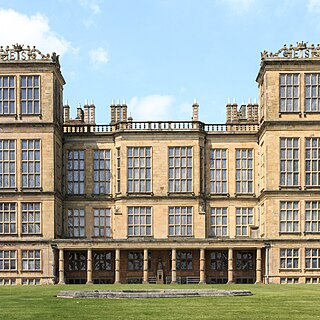 W
WElizabethan architecture refers to buildings of a certain style constructed during the reign of Queen Elizabeth I of England and Ireland from 1558–1603. Historically, the era sits between the long era of dominant architectural style of religious buildings by the Catholic Church, which ended abruptly at the Dissolution of the Monasteries from c.1536, and the advent of a court culture of pan-European artistic ambition under James I (1603–25). Stylistically, Elizabethan architecture is notably pluralistic. It came at the end of insular traditions in design and construction called the Perpendicular style in church building, the fenestration, vaulting techniques and open truss designs of which often affected the detail of larger domestic buildings. However, English design had become open to the influence of early printed architectural texts imported to England by members of the church as early as the 1480s. Into the 16th century, illustrated continental pattern-books introduced a wide range of architectural exemplars, fueled by the archaeology of classical Rome which inspired myriad printed designs of increasing elaboration and abstraction.
 W
WThe Jacobethan or Jacobean Revival architectural style is the mixed national Renaissance revival style that was made popular in England from the late 1820s, which derived most of its inspiration and its repertory from the English Renaissance (1550–1625), with elements of Elizabethan and Jacobean.
 W
WAmport House, was the home of the British Armed Forces Chaplaincy Centre (AFCC), until March 2020 when AFCC moved to Beckett House, Shrivenham, near Swindon and the site was sold. Amport House is a manor house in the village of Amport, near Andover, Hampshire. It is now a Grade II listed building.
 W
WAthcarne Castle is a ruined Elizabethan castle outside the town of Duleek in County Meath, Ireland.
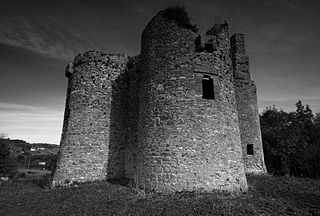 W
WBallinafad Castle is located in Sligo County in the Republic of Ireland. It can be found on the east side of highway N4 overlooking Lough Arrow at the town of Ballinafad.
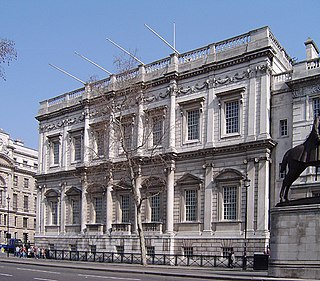 W
WIn English architecture, mainly from the Tudor period onwards, a banqueting house is a separate pavilion-like building reached through the gardens from the main residence, whose use is purely for entertaining, especially eating. Or it may be on the roof, as in many 16th-century prodigy houses. It may be raised for additional air or a vista, with a simple kitchen below, as at Hampton Court Palace and Wrest Park, and it may be richly decorated, but it normally contains no bedrooms, and typically a single grand room apart from any service spaces. The design is often ornamental, if not downright fanciful, and some are also follies, as in Paxton's Tower. There are usually plenty of windows, as appreciating the view was a large part of their purpose. Often they are built on a slope, so that from the front, only the door to the main room can be seen; the door to the servants' spaces underneath was hidden at the back. The Banqueting House, Gibside is an example.
 W
WBerden Hall is a Grade II* listed Elizabethan country house in Berden, in the Uttlesford District of Essex, England. The house was built in the 1580s. In 2012 the house was on the market for £3.5 million.
 W
WBerkhamsted Place was an English country house which was erected sometime around 1580 in Berkhamsted, Hertfordshire, England. It was built by Sir Edward Carey, the keeper of the Jewels to Queen Elizabeth I from stones removed from Berkhamsted Castle. Several notable residents of Berkhamsted lived in the house and over the years its owners welcomed guests such as King Charles I and William Gladstone.
 W
WBispham Hall is a Grade II* listed Elizabethan country house in Billinge, now part of the Metropolitan Borough of Wigan, Greater Manchester.
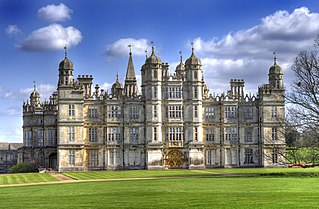 W
WBurghley House is a grand sixteenth-century English country house near Stamford, Lincolnshire. It is a leading example of the Elizabethan prodigy house, built and still lived in by the Cecil family. The exterior largely retains its Elizabethan appearance, but most of the interiors date from remodellings before 1800. The house is open to the public on a seasonal basis and displays a circuit of grand and richly furnished state apartments. Its park was laid out by Capability Brown.
 W
WCastle Lodge is a medieval Tudor and Elizabethan architectural transition period house in Ludlow, Shropshire, situated close to Ludlow Castle. Scenes from the 1965 film version of Moll Flanders were shot here. Castle Lodge has one of the largest collections of oak panelling in England and dates from the early 13th century, rebuilt in 1580. In Tudor times it was the home of Elizabeth I's Master of Requests and was once used as a prison.
 W
WChequers, or Chequers Court, is the country house of the Prime Minister of the United Kingdom. A 16th-century manor house in origin, it is located near the village of Ellesborough, halfway between Princes Risborough and Wendover in Buckinghamshire, United Kingdom, at the foot of the Chiltern Hills. It is about 40 miles (64 km) north-west of central London. Coombe Hill, once part of the estate, is located two-thirds of a mile (1.1 km) northeast. Chequers has been the country home of the serving Prime Minister since 1921 after the estate was given to the nation by Sir Arthur Lee by a Deed of Settlement, given full effect in the Chequers Estate Act 1917. The house is listed Grade I on the National Heritage List for England.
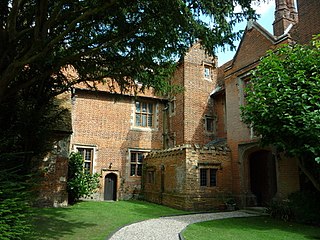 W
WCreeksea Place is located near to the town of Burnham-on-Crouch in the Essex countryside of eastern England. Originally built in 1569, the estate retains many original internal and external features, with an original walled-garden and untouched orchard, where the BBC’s adaptation of Great Expectations was filmed.
 W
WDoddington Hall is, from the outside, an Elizabethan prodigy house or mansion complete with walled courtyards and a gabled gatehouse. Inside it was largely updated in the 1760s. It is located in the village of Doddington, to the west of the city of Lincoln in Lincolnshire, England.
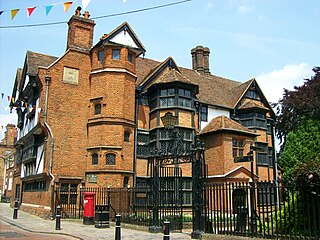 W
WEastgate House is a Grade I listed Elizabethan townhouse in Rochester, Kent, England. It is notable for its association with author Charles Dickens, featuring as Westgate in The Pickwick Papers and as the Nun's House in The Mystery of Edwin Drood. Now a Dickens Museum, the grounds of Eastgate House contain the Swiss chalet in which Dickens penned several of his novels.
 W
WEgerton House was a small Elizabethan mansion which stood on the High Street in the town of Berkhamsted, Hertfordshire in England. Built during the reign of Queen Elizabeth I, it was demolished in 1937 and the site is now occupied by the Art Deco Rex Cinema. As well as its architectural merit, Egerton House was noted for its occupancy by the Llewelyn Davies family and its literary association with J. M. Barrie, author of Peter Pan.
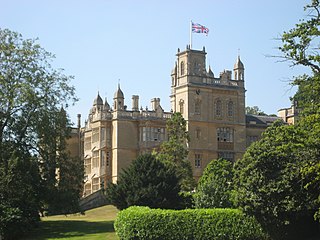 W
WEnglefield House is an Elizabethan country house with surrounding estate at Englefield in the English county of Berkshire. The gardens are open to the public all year round on particular weekdays and the house by appointment only for large groups.
 W
WGawthorpe Hall is an Elizabethan country house on the banks of the River Calder, in the civil parish of Ightenhill in the Borough of Burnley, Lancashire, England. Its estate extends into Padiham, with the Stockbridge Drive entrance situated there. Since 1953 it has been designated a grade I listed building. The hall is financed and run by the National Trust in partnership with Lancashire County Council. In 2015 the Hall was given £500,000 funding from Lancashire County Council for vital restoration work needed on the south and west sides of the house.
 W
WGravetye Manor is a manor house located near East Grinstead, West Sussex, England. The former home of landscape gardener William Robinson, it is now a hotel and restaurant holding, in 2020, one star in the Michelin Guide, and is a Grade I listed building, with Grade 2* listed gardens.
 W
WGreat Fosters is a 16th-century mansion which originally lay within Windsor Great Park and is still adjacent to the town of Egham, Surrey, England. It is a Grade I listed building, close to Heathrow and the M25 London orbital motorway.
 W
WGreys Court is a Tudor country house and gardens in the southern Chiltern Hills at Rotherfield Greys, near Henley-on-Thames in the county of Oxfordshire, England. Now owned by the National Trust, it is located at grid reference SU725834, and is open to the public.
 W
WHardwick Hall in Derbyshire, is an architecturally significant Elizabethan country house in England, a leading example of the Elizabethan prodigy house. Built between 1590 and 1597 for the formidable Bess of Hardwick, it was designed by the architect Robert Smythson, an exponent of the Renaissance style of architecture. Hardwick Hall is one of the earliest examples of the English interpretation of this style, which came into fashion having slowly spread from Florence. Its arrival in Britain coincided with the period when it was no longer necessary or legal to fortify a domestic dwelling. Ownership of the house was transferred to the National Trust in 1959. It is fully open to the public and received 298,283 visitors in 2019.
 W
WHarvington Hall is a moated medieval and Elizabethan manor house in the hamlet of Harvington in the civil parish of Chaddesley Corbett, south-east of Kidderminster in the English county of Worcestershire.
 W
WHeydon Hall is an Elizabethan house set in parkland near the village of Heydon, Norfolk, England.
 W
WHighlow Hall is a historic Elizabethan manor house in Hathersage, Derbyshire, England. It was owned by the Eyre family from approximately 1340 to 1842, at which point one branch of the family had already emigrated to the United States. It is a Grade II*-listed building and dates to the late 16th century.
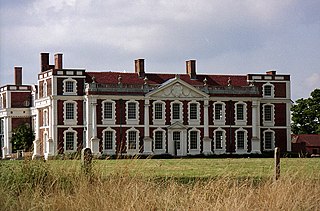 W
WHill Hall is an Elizabethan mansion located in Theydon Mount near Epping, Essex, England. Although owned by English Heritage, the building consists of many private apartments. It is a grade I listed building.
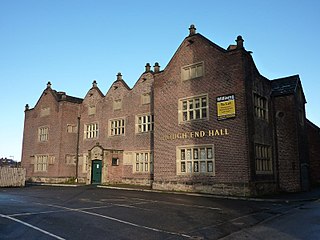 W
WHough End Hall is a historic house now in Chorlton-cum-Hardy,, Manchester, North West England. It was built in 1596 during the reign of Queen Elizabeth I by Sir Nicholas Mosley, when he became Lord of the Manor of Manchester and of the dependent Manor of Withington. The Mosleys were an influential Mancunian family from the 16th century onwards, and prominent in the affairs of the Manchester district for two and a half centuries.
 W
WHowley Hall is a ruined Elizabethan country house in Batley, West Yorkshire, England. It has been designated a scheduled monument since 1997.
 W
WKinnersley Castle in Herefordshire, England, is one of the many marches castles along the Welsh Borders.
 W
WLake House is an Elizabethan country house dating from 1578, in Wilsford cum Lake in Wiltshire, England, about 7 miles north of Salisbury. It is a Grade I listed building. The gardens are Grade II listed in the English Heritage Register of Parks and Gardens of Special Historic Interest.
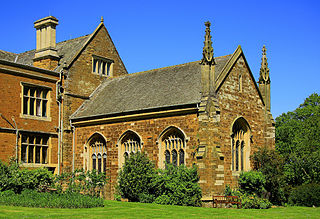 W
WLaunde Abbey is located in Leicestershire, England, 14 miles east of the city of Leicester and six miles south west of Oakham, Rutland. The building is used as a conference and retreat centre by the Church of England dioceses of Leicester and Peterborough.
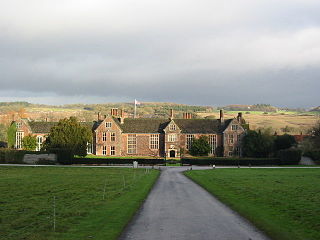 W
WLittlecote House is a large Elizabethan country house and estate in the civil parishes of Ramsbury and Chilton Foliat, in the English county of Wiltshire, about 2 1⁄2 miles (4 km) northeast of the Berkshire town of Hungerford. The estate includes 34 hectares of historic parklands and gardens, including a walled garden dating from the 17th and 18th centuries. In its grounds is Littlecote Roman Villa.
 W
WLongleat is an English stately home and the seat of the Marquesses of Bath. A leading and early example of the Elizabethan prodigy house, it is adjacent to the village of Horningsham and near the towns of Warminster and Westbury in Wiltshire and Frome in Somerset. It is noted for its Elizabethan country house, maze, landscaped parkland and safari park. The house is set in 1,000 acres (400 ha) of parkland landscaped by Capability Brown, with 4,000 acres (1,600 ha) of let farmland and 4,000 acres (1,600 ha) of woodland, which includes a Center Parcs holiday village. It was the first stately home to open to the public, and the Longleat estate includes the first safari park outside Africa.
 W
WMontacute House is a late Elizabethan mansion with garden in Montacute, South Somerset.
 W
WThe Old Market Hall is an Elizabethan building situated in the town centre of Shrewsbury, the county town of Shropshire, England. It is a Grade I listed building.
 W
WPoundsbridge Manor, nicknamed "The Pitcher House", is an oak timber-framed house built in 1593 by John and Brian Durtnall for their father William, Rector of Penshurst from 1563 to 1596. Originally, it was called "Durtnolls" and it has an inscription "1593 WD ETA 69". WD are the initials of William Durtnell and the letter D, looking like an inverted Q, is the Gothic form of the letter. ETA 69 means he was 69 years old when the house was finished. In 1678 it was owned by an Edmond Woodgate and he left it to his nephew Thomas Woodgate, a yeoman of Farningham, who left it to his wife. Later, it was divided in two and one part became a tavern.
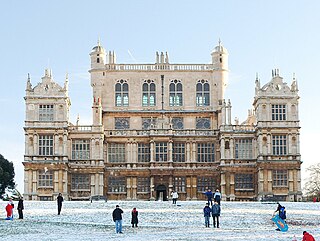 W
WProdigy houses are large and showy English country houses built by courtiers and other wealthy families, either "noble palaces of an awesome scale" or "proud, ambitious heaps" according to taste. The prodigy houses stretch over the periods of Tudor, Elizabethan, and Jacobean architecture, though the term may be restricted to a core period of roughly 1570 to 1620. Many of the grandest were built with a view to housing Elizabeth I and her large retinue as they made their annual royal progress around her realm. Many are therefore close to major roads, often in the English Midlands.
 W
WRainthorpe Hall is a Grade I listed Elizabethan country mansion near Tasburgh in Norfolk, England, about 8 miles (13 km) south of Norwich. It is notable for its medieval stonework, wood carvings, rare 17th-century leather wall-coverings and 19th-century Victorian mirrors. The hall's grounds extend to 18.7 acres.
 W
WRuperra Castle or Rhiwperra Castle is a Grade II* Listed building and Scheduled Ancient Monument, situated in Lower Machen in the county borough of Caerphilly, Wales. It was built in 1626, now it is in a ruined condition.
 W
WShaw House is an important example of an early symmetrical H-plan Elizabethan mansion, located at Shaw, on the north-eastern outskirts of Newbury in Berkshire.
 W
WSmallbridge Hall is a Grade II* listed English country house in Bures St. Mary, Suffolk, near Colchester, England. The house is partially surrounded by a moat and stands on the bank of the River Stour. The present building is one wing of a large two-storey red-brick Elizabethan mansion. It was heavily restored once around c. 1874 and again in 1932.
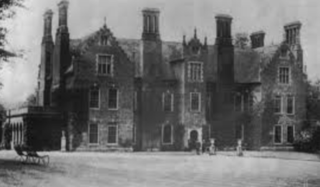 W
WSpixworth Hall was an Elizabethan stately home situated in the civil parish of Spixworth, Norfolk, located just north of the city of Norwich on the Buxton Road, until it was demolished in 1952.
 W
WTonge Hall is a Grade II* listed Elizabethan manor house in Tonge, Middleton, Greater Manchester, England.
 W
WTreguddick Manor is a Grade II* manor house and 18-acre (7.3 ha) estate in the parish of South Petherwin, Cornwall, England, to the southwest of Launceston. It is situated just off the A30 road between Polyphant and Kennard's House, near the River Inny.
 W
WTudor Hall in Wood Street, Chipping Barnet, is the original site of Queen Elizabeth's School, Barnet. It was built around 1577 following the granting of a charter for the school by Queen Elizabeth I in 1573 and is a grade II listed building with Historic England.
 W
WUpton Cressett Hall is an Elizabethan moated manor house in the village of Upton Cressett, Shropshire, England. It is a Grade I-listed building.
 W
WWillaston Old Hall is a former manor house in the village of Willaston, in the unitary authority of Cheshire West and Chester, England. The building carries the date 1558, but both the authors of the Buildings of England series, and Figueirdo and Treuherz, argue that this date is too early for the architectural style of the house. Figueirdo and Treuherz are of the opinion that it was built in the early 17th century for Hugh Bennet. The house is constructed in red brick and stands on a red sandstone plinth. It has sandstone dressings and quoins, and a slate roof with stone ball finials. The entrance front is symmetrical, and consists of five bays, with three storeys. The central and the outer bays project forward and are gabled. The windows are mullioned and transomed. The house is recorded in the National Heritage List for England as a designated Grade II* listed building.
 W
WWollaton Hall is an Elizabethan country house of the 1580s standing on a small but prominent hill in Wollaton Park, Nottingham, England. The house is now Nottingham Natural History Museum, with Nottingham Industrial Museum in the outbuildings. The surrounding parkland has a herd of deer, and is regularly used for large-scale outdoor events such as rock concerts, sporting events and festivals.